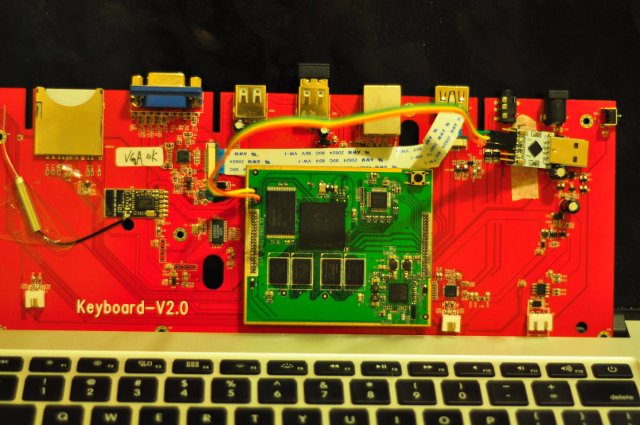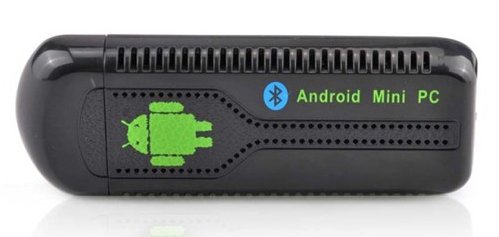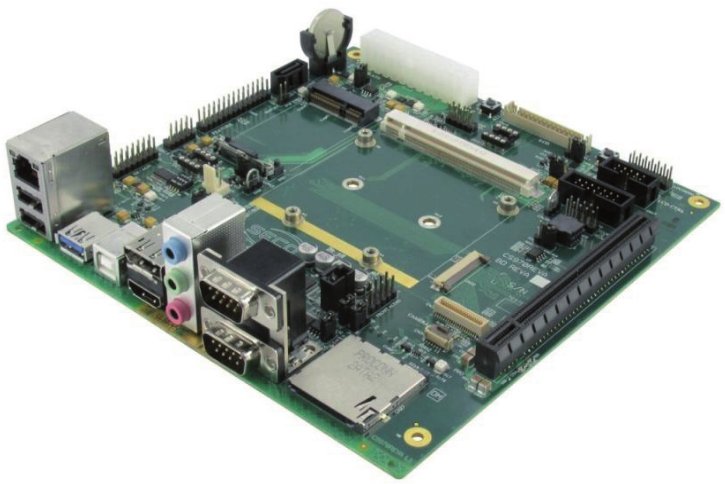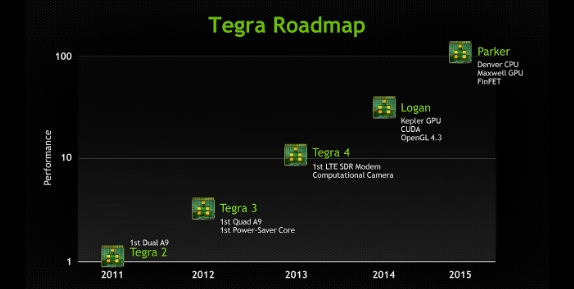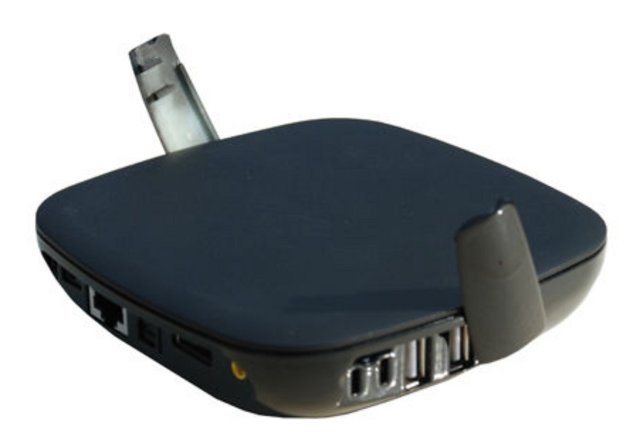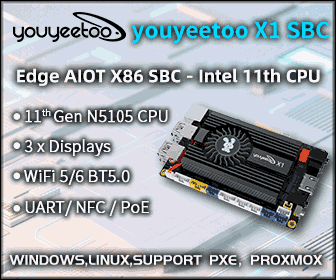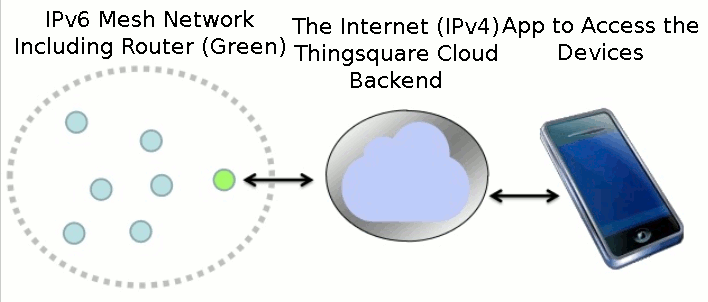Tejinder has just sent me a picture of the internal boards of the CoolShip Android keyboard computer. It’s composed of a main board (Keyboard-V2.0) and a CPU module with RK3066, flash and SDRAM chipsets, PMIC, and video decoder.. Tejinder found the following components on the boards: Processor – Rockchip RK 3066 SDRAM – 4x Hynix H5TQ2G83BFR Flash – Hynix h27ubg8t2btr 1080p Video decoder – Rockchip RK1000S PMIC – 1x Wolfson WM8326G DAC – 1x Wolfson WM8960G Wifi chip – RTL8188CTV USB HUB – GL850G The two 2-pin connector (one on the left, and the other under the DAC) should be for the speakers, and the 3-pin connector on the right goes to a 8-pin IC connected to the power, so it could be the connection to the 300 mAh battery used to handle unexpected power failure. You’ll also notice he has connected an UART to TTL debug board to the […]
Ugoos UG007B Rockchip RK3188 mini PC Sells for $74
My very first article about Chinese mini PCs was about Rikomagic MK802, an Android 4.0 HDMI TV dongle with a cortex A8 processor, 512 MB RAM and 4GB flash, and the device was selling for $74 at the time. Ten months later, it appears that for the exact same price you can now buy UG007B, an Android 4.2 mini PC powered by Rockchip RK3188 quad core Cortex A9 processor with 2GB RAM, and 8 GB Flash. Here are UG007 IIB specifications: SoC – Rockchip RK3188 Quad Core ARM Cortex-A9 Processor up to 1.6Ghz + Mali-400MP4 Quad-core GPU System Memory – 2GB DDR3 RAM Storage – 8GB Nand Flash + microSD card slot (up to 32GB) Connectivity Wifi – 802.11 b/g/n (MediaTek 5931 in CDT-K25931 module) Bluetooth 3.0 (MediaTek 6622 in CDT-K25931 module) 3G support via external USB dongle USB – 1 x USB 2.0 Host + 2x micro USB host Video […]
SECO mITX GPU DevKit Features Nvidia Tegra 3, Supports CUDA 5
SECO mITX GPU DEVKIT is a GPU computing development kit that provides a Mini-ITX Qseven 2.0 carrier board (SECO mITX Carrier Board) with a Nvidia Tegra 3 powered Qseven SoM (QuadMo747-X/T30). The carrier board provides a PCI-e x16 connector (PCI Express x4) intended to allow the connection of CUDA 5 enabled desktop graphics boards. Embedded Control Europe reports that the platform will support Nvidia Kayla platform. The main specifications of the platform are as follows: CPU – Nvidia Tegra 3 Quad-Core ARM Cortex A9 GPU – TBD. But you should be able to insert Nvidia graphics card via the PCI-e x16 connector (PCI Express x4) on the mini-ITX board Memory – 2 GB Storage – 4 GB eMMC + 1x SATA 2.0 Connector Network – 1x Gigabit Ethernet USB – 3x USB 2.0 + 1 OTG port Display – HDMI The platform will support Linux Ubuntu , as well as […]
Nvidia Updates its Tegra Roadmap with Parker 64-Bit ARM SoC, Unveils Kayla CUDA Development Platform
Nvidia has given an update about the roadmap for its Tegra processor at the GPU Technology Conference in San Jose, California. Tegra 4 will still be followed by Logan (Tegra 5) as planned with a Kepler GPU and support for CUDA and OpenGL 4.3, but “Stark” has been replaced by “Parker” (Tegra 6) which will be the first 64-Bit Tegra processor based on Denver CPU, Maxwell GPU and make use of Finfet transistors. Logan will be available in 2014, and Parker should be available in 2015 with 100 times more performance than Tegra 2. With this kind of performance, the separation line between desktop and mobile processors will be gone. Nvidia also unveiled Kayla (“Logan’s girlfriend”), a development platform for CUDA and OpenGL based on Tegra 3 quad-core ARM processor and a Kepler GPU connected via a PCI express slot. Jen-Hsun Huang (above) showcased Kayla performance by running real-time ray […]
DH108A Android 4.1 Media Player Powered by AllWinner A31
DH108A (aka K-A37) is the first AllWinner A31 Android set-top box I’ve ever come across. This full-sized media player comes with 2 GB RAM, 8 or 16 GB flash, and provides both Ethernet and Wi-Fi connectivity. This Android 4.1.1 STB has the following specifications: SoC – AllWinner A31 quad core Cortex A7 + PowerVR SGX544MP2 GPU System Memory – 2GB RAM Storage – 8 or 16GB NAND Flash + microSD slot Video Output – HDMI 1.4 Connectivity: Ethernet – 10/100 Mbps (RJ45 port) WIFI – 802.11 b/g/n USB – 4x USB Host* ports + 1 USB Device port (*Note: The specs on Alibaba indicate 4x USB OTG ports instead) Power supply – 5V/2A Weight – 110g Dimensions – 115x115x23 mm The device comes with a power adapter, a remote control, an HDMI cable, and a user manual. It may also be sold with a 2.4 GHz wireless mouse and keyboard […]
$19 RFDuino is a Coin-sized Bluetooth Arduino-compatible Board
RFDuino is a tiny board, about the size of a coin, powered by Nordic nRF51822 Cortex M0 SoC including bluetooth 4.0 LE support, and software compatible with Arduino UNO and DUE board, so you can just use Arduino sketches with the board. Bluetooth allows it to communicate with your smartphone (iPhone for now, but Android support is coming) to control motors & relays, monitor sensors, turn LEDs on/off, and more. Key features of RFDuino board: MCU – Nordic nRF51822 Cortex M0 @ 16 MHz Memory – 16 KB on-chip SRAM Storage – 256 KB on-chip Flash Connectivity – Bluetooth 4.0 Low Energy built in MCU GPIO – 7 pin software configurable as digital IO, analog ADC, SPI, I2C, UART and PWM. The company currently offers several stackable shields for RFDuino including battery shields (1x AAA, 2x AAA, and CR2032 coin battery), a servo shield, a USB shield, a prototype shield […]
Thingsquare Mist – Open Source Firmware for The Internet of Things
Thingsquare recently released the source code for the Thingsquare Mist firmware, an ultra lightweight router software (<4 kB memory) for the Internet of Things based on open Internet standards such as IPv6, RPL (Routing Protocol for Lossy networks), and 6lowpan. Thingsquare Mist allows to connect battery-powered wireless micro-controllers to the Internet, and is currently used in applications such as smart light bulbs, connected home appliances, and connected cities. The IPv6 mesh network is composted of nodes with a low power radio that communicate with the Mist router (Green), which in turn connect to the Internet and Thingsquare Cloud backend (Thingsquare Haven) to store the data, and/or receive control commands via Ethernet or Wi-Fi. The end users can then use an App to monitor, and/or control the devices remotely. Thingsquare Mist uses IETF RPL IPv6 mesh routing protocol (pronounced “ripple”) for IPv6 nodes communications. Thingsquare Mist runs on several low-power wireless […]
Embedded Android Training Workshop At Linaro Connect Asia 2013
Karim Yaghmour, Opersys’ CEO, gave 4 training sessions dealing Embedded Android at Linaro Connect Asia 2013, in Hong Kong, earlier this month. Charbax filmed those 4 40 to 50 minutes session with excellent video and audio quality, so I encourage you to watch all sessions if you are interested in this topic. The presentation slides are available on Slideshare. The first training session is entitled “Android Internals”, and Karim introduces Android’s overall architecture, following the agenda below: Android Concepts Framework Intro Overall Architecture System startup Linux Kernel Hardware Support Native User-Space Dalvik JNI System Server Calling on Services Activity Manager Binder HAL Stock AOSP Apps Case-in-Point The second session “Working with the AOSP” deals with the following key points: Tools and location Content Building Build tricks Build system architecture Output images Using adb Custom toolchains and dev kits Compatibility Test Suite Basic hacks The third session entitled “Native Android user-space” […]


